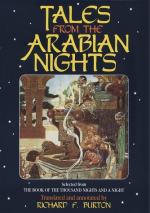“Now in the month of Adar, Jesus, after the manner of a King, assembled the boys together. They spread their clothes on the ground and he sat down upon them. Then they put on his head a crown made of flowers, and like chamber-servants stood in his presence, on the right and on the left, as if he was a king. And whoever passed by that way was forcibly dragged by the boys, saying, ‘Come hither and adore the king; then go away.’”
A striking parallel to this is found in the beginning of the Mongolian Tales of Ardshi Bordshi—i.e., the celebrated Indian monarch, Raja Bhoja, as given in Miss Busk’s “Sagas from the Far East,” p. 252.
“Long ages ago there lived a mighty king called Ardshi Bordshi.[FN#411] In the neighbourhood of his residence was a hill where the boys who were tending the calves were wont to pass the time by running up and down. But they had also another custom, and it was that whichever of them won the race was king for the day—an ordinary game enough, only that when it was played in this place the Boy-King thus constituted was at once endowed with such extraordinary importance and majesty that everyone was constrained to treat him as a real king. He had not only ministers and dignitaries among his playfellows, who prostrated themselves before him, and fulfilled all his behests, but whoever passed that way could not choose but pay him homage also."[FN#412]
This is followed by an analogous story to that of Ah Khwajah and the Merchant of Baghdad, under the title of “The False Friend,” in which a merchant on a trading journey entrusts a friend with a valuable jewel to give to his wife on his return home, and the friend retaining it for his own use suborns two men to bear witness that they saw him deliver it to the merchant’s wife, so the King dismisses the suit. But the Boy-King undertakes to try the case de novo; causes the two witnesses to be confined in separate places, each with a piece of clay which he is required to make into the form of the jewel, and the models are found to be different one from the other, and both from the shape of the jewel as described by the false friend. A similar story occurs in several Indian collections, with a Kazi instead of the Boy-King.
A curious instance of precocity is related in the Third Book of the “Masnavi” (see ante p. 365), of which Mr. E. H. Whinfield gives an outline in his admirable and most useful abridgment of that work: The boys wished to obtain a holiday, and the sharpest of them suggested that when the master came into school each boy should condole with him on his alleged sickly appearance. Accordingly, when he entered, one said, “O master, how pale you are looking! and another said, You are looking very ill to-day, and so on. The master at first answered that there was nothing the matter with him, but as one boy after another continued assuring him that he looked very ill, he was at length deluded into imagining that he must really be ill. So




